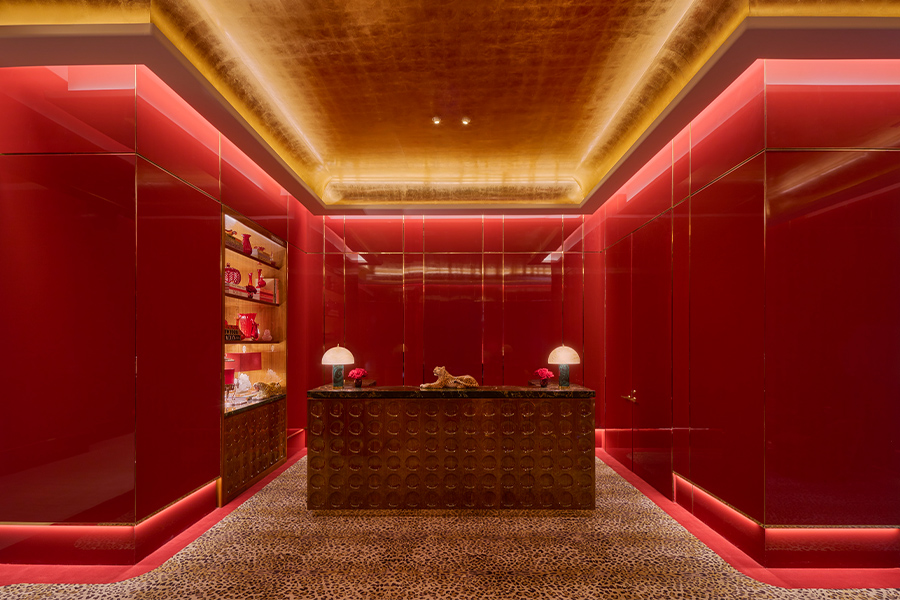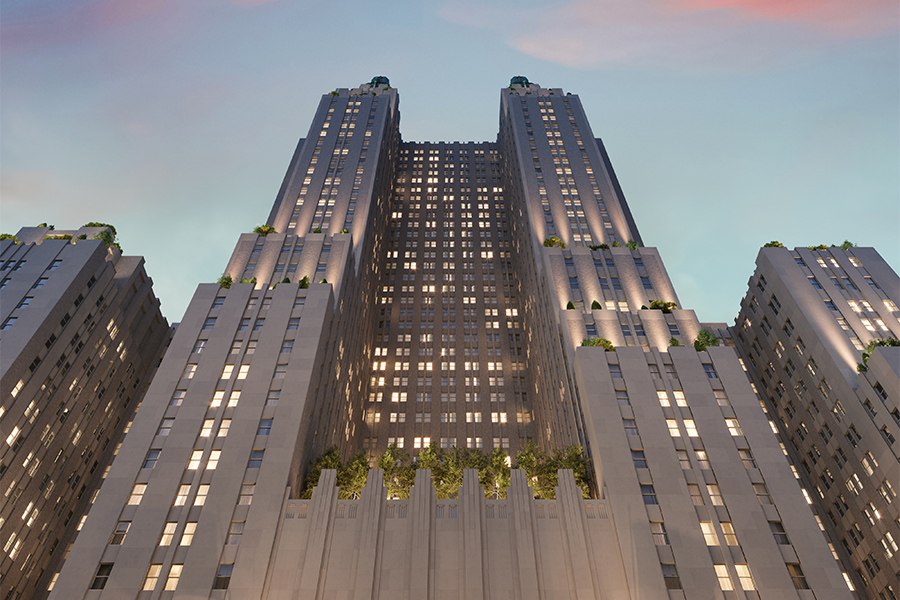In Washington, DC, bipartisanship is nearly impossible to find, but there is one thing nearly everyone can agree on: development continues to reach new heights, helping to bring a 21st-century panache to the district’s rich heritage. According to data and analytics specialist STR, the city has 26 projects with 4,205 rooms in its pipeline as of December, including the Piero Lissoni-designed SLS Washington DC, set to open in 2019.
Sage Hospitality has found a home in the heart of the city with its 226-key Darcy Hotel from Los Angeles firm Beleco, while microhotel brand Pod Hotels looked to DC for its first hotel outside of Manhattan and Brooklyn, courtesy of New York’s Stonehill Taylor. In 2016, the infamous Watergate Hotel received a luxurious facelift from London studio Ron Arad Architects, while Kimpton has grown its footprint in the nation’s capital with three new hotels, including the Bill Rooney-designed Mason & Rook. Yet, one of the city’s most anticipated projects is the Line Hotel from Sydell Group, housed in a 110-year-old Neoclassical church in the emerging Adams Morgan neighborhood. For the design, New York-based INC Architecture and Design wanted to “do something that’s decidedly contemporary and current and also addresses the history of that structure,” says creative and managing director and partner Adam Rolston. The hotel became a wholly unique “collision of old and new,” he adds. The highlight is the lobby, where a chandelier crafted from repurposed organ pipes dangles from the double-height ceiling while guests sit below on refreshed pews dipped in bold colors. Along with 220 guestrooms, diverse F&B offerings include A Rake’s Progress from chef Spike Gjerde and Japanese restaurant-speakeasy blend Spoken English from chef Erik Bruner-Yang.
Nowhere is the influx of development more apparent than the $2.5 billion District Wharf from Hoffman-Madison Waterfront, a partnership between mixed-use developers PN Hoffman and Madison Marquette. It’s truly a merging of ideas and talents, with 11 architects joining masterplanner Perkins Eastman’s local office in the redevelopment effort, including Shop Architects, which designed two office buildings and Uruguayan architect Rafael Viñoly, who is behind the high-end condos, among others. Because the area is such an integral part of the city’s history, “we saw this as an opportunity to build a neighborhood that would bring DC back to its greatest natural resource—its waterfront,” says PN Hoffman founder and CEO Monty Hoffman.
Now, the destination, which has been mostly untouched in the last 50 years, has become a small city in its own right, with 3 million square feet of mixed-use development along a 24-acre, milelong stretch of the Southwest Waterfront along the Potomac River, brought to life with retail, offices, residences, restaurants, and hotels. It’s a massive undertaking that leaves no stone unturned with sustainability at the forefront: LEED Gold or Silver status is targeted for individual buildings with green roofs, which will be surrounded by 300 new trees. Entertainment is also a key pillar and an anchor of the massive development is the 57,000-square-foot Anthem music hall from New York firm Rockwell Group. Beyond the majestic three-story lobby, the event space achieves a sense of intimacy with angled balconies that create a series of rooms and circular chandeliers that can be raised or lowered to change the space’s scale.
Along with restoring a 200-year-old fish market and creating 1,400 residences, the Hoffman-Madison Waterfront team also developed three new hotels. Along with the extended stay Hyatt House, a notable addition is Canopy by Hilton Washington DC The Wharf—the brand’s first property in North America—from New York’s Krause Sawyer, which looked to the “rich history of the area, as well as the transformation of the marina and the Municipal Fish Market over time” for the design, says cofounder Kajsa Krause. Rough materials juxtapose smooth finishes and millwork detailing in public spaces, while guestrooms are inviting with graywashed wood floors (also found as accent walls behind the beds) and residentially appointed furnishings. The moody rooftop bar Whiskey Charlie takes advantage of its location, where dark and light materials mingle in the glass-enclosed space, and an outdoor terrace boasts heady views. There’s also the 278-key InterContinental Washington DC – The Wharf with interiors that allow the river to take center stage, thanks to Sudbury, Massachusetts-based Parker Torres Design. “We started to think about the Potomac River during the various seasons—how the physical form and movement of the river not only changes the view, but also enhances the guest experience,” says associate principal Ellen Bourge Johnson. This informs much of the design, including in the lobby, where a sculptural staircase is paired with expansive windows and a 20-foot-high water droplet-inspired chandelier.
The Wharf is also home to 20 restaurants (with a total of 75 planned for the area), some from celebrated chefs, including Fabio Trabocchi’s latest culinary venture Del Mar, which is “first and foremost, a tribute to my wife [and business partner] Maria and her family’s cultural and culinary heritage,” he says. The 240-seat Spanish love note creates “a memorable, exceptional dining experience for our guests,” with a sophisticated environment reminiscent of the Mediterranean courtesy of Barcelona-based interior designer Lázaro Rosa-Violán. Crafted by 2Scale Hospitality, Top Chef star Mike Isabella’s Requin evokes a French Mediterranean flare, while industrial touches like steel and wood are softened by a palette of deep green and teal, textured velvet banquettes, and marble.
Currently, the Wharf comprises 14 buildings linked by 10 acres of public space and parks. Phase two is expected to break ground in mid-2018, and once complete in 2022, expect more office towers, condominiums, hotels, retail and restaurants, and outdoor space M Street Landing by Michael Van Valkenburgh Associates, all showcasing the appeal of this political town.



